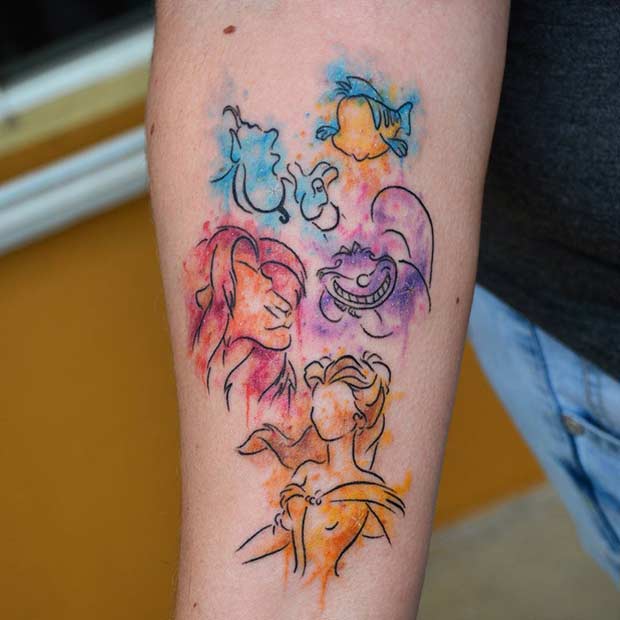
The word tattoo, or tattow in the 18th century, is a loanword from the Samoan word tatau, meaning "to strike". The Oxford English Dictionary gives the etymology of tattoo as "In 18th c. tattaow, tattow. From Polynesian (Samoan, Tahitian, Tongan, and so forth.) tatau. In Marquesan, tatu." Before the importation of the Polynesian word, the practice of tattooing had been described in the West as painting, scarring or staining.The etymology of the physique modification term is not to be confused with the origins of the word for the military drumbeat or functionality — see military tattoo. In this case, the English word tattoo is derived from the Dutch word taptoe.The very first written reference to the word tattoo (or tatau) seems in the journal of Joseph Banks (24 February 1743 – 19 June 1820), the naturalist aboard explorer James Cook's ship HMS Endeavour: "I shall now mention the way they mark themselves indelibly, every of them is so marked by their humour or disposition".[5] The word tattoo was brought to Europe by Cook, when he returned in 1769 from his 1st voyage to Tahiti and New Zealand. In his narrative of the voyage, he refers to an operation referred to as "tattaw".
Tattoo enthusiasts could refer to tattoos as "ink", "pieces", "skin art", "tattoo art", "tats" or "work"; to the creators as "tattoo artists", "tattooers" or "tattooists"; and to places exactly where they function as "tattoo shops", "tattoo studios" or "tattoo parlors".Mainstream art galleries hold exhibitions of both standard and custom tattoo designs, such as Beyond Skin, at the Museum of Croydon. Copyrighted tattoo designs that are mass-produced and sent to tattoo artists are known as "flash", a notable instance of industrial style.[8] Flash sheets are prominently displayed in several tattoo parlors for the objective of offering both inspiration and prepared-made tattoo photos to consumers.
The Japanese word irezumi indicates "insertion of ink" and can mean tattoos using tebori, the classic Japanese hand method, a Western-style machine or any approach of tattooing making use of insertion of ink. The most typical word utilized for classic Japanese tattoo styles is horimono. Japanese could use the word tattoo to imply non-Japanese types of tattooing.
Related Images with 25 Cute Disney Tattoos That Are Beyond Perfect – StayGlam Page 2
Gearhead tattoos Page 3 Pirate4x4.Com : 4x4 and OffRoad Forum
427 best poppy tattoo images on Pinterest Poppies, Tattoo ideas and Poppies tattoo

17 Best ideas about Frog Tattoos on Pinterest Pencil drawings of flowers, Frog drawing and

Off the Map Tattoo
thank you for visiting this site post about tattoo off, i hope you enjoy it.


Post a Comment
Post a Comment